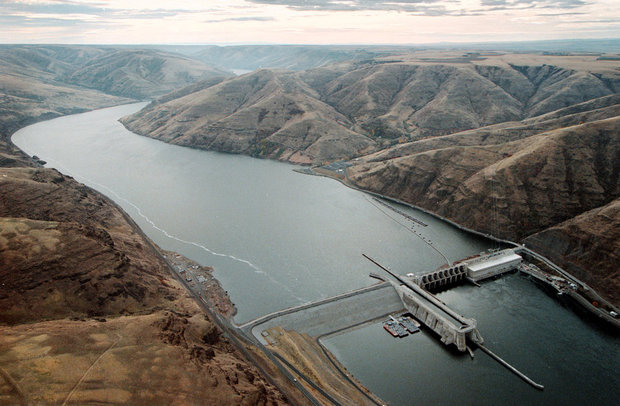forum
library
tutorial
contact

Weekend Reads:
The Snake River Dams
by Kevin Schofield
South Seattle Emerald, June 18, 2022
|
the film forum library tutorial contact |

|
Weekend Reads:
by Kevin Schofield
|
The meat of the report is a "what-if" scenario
 This weekend's read is a draft report from the State of Washington on the future of four controversial dams on the lower Snake River in eastern Washington. The dams are co-managed by the Army Corps of Engineers and the Bonneville Power Administration, which harvests hydroelectric power generating facilities there. Together the four dams generate about one gigawatt of electricity, up to three gigawatts at peak times.
This weekend's read is a draft report from the State of Washington on the future of four controversial dams on the lower Snake River in eastern Washington. The dams are co-managed by the Army Corps of Engineers and the Bonneville Power Administration, which harvests hydroelectric power generating facilities there. Together the four dams generate about one gigawatt of electricity, up to three gigawatts at peak times.
But the impact of the dams goes far beyond the power generation: they have dramatically changed the Snake River ecosystem over the last fifty years. Behind each dam sits a large reservoir, and collectively they have shifted the river from an active, running one to a "still", slow-flowing one. That makes a large difference, particularly for salmon swimming out to the ocean and back upstream to spawn: between the dams (which have fish ladders) and the reservoirs, it changes the flow and difficulty for salmon to navigate the river, and it creates easy opportunities for predators who feed on salmon to catch them in the waters behind the dams. There is substantial evidence that the Snake River dams have created barriers to native salmon and have contributed to reductions in salmon populations to the point where many are now at or below the "quasi-extinction threshold;"; they are not expected to survive in the long-term without intervention. The dams have had similar effects on steelhead and lamprey populations.
But the changed Snake River has effects on the human population as well. The still river allows for barge traffic, bringing wheat and other products from eastern Washington downriver, and supplies (such as fertilizer) and heavy equipment upriver. Barging is a cost-effective and dependable alternative to shipping by rail and road. The Snake also supports a river cruise industry that brings millions of dollars of revenues to eastern Washington and Idaho; it also supports nearly sixty outdoor recreation businesses. And critically, the reservoirs provide water for irrigating crops. The impact has been equally, if not more, dramatic on the native tribes whose lands the Snake River runs through: by treaty, the tribes have access to the natural resources of the lands including the river, but the decimation of fish runs has robbed them of the riches of their land.
The meat of the report is a "what-if" scenario: what would it cost to remove the dams, what would the impacts be, and what would need to be spent to mitigate negative impacts to power generation, communities, businesses, agriculture, and transportation.
There have been multiple studies by various stakeholders on the total related costs, which range from $10 billion to $27 billion. That includes removing the dams and dealing with the outflow of accumulated sediment; new facilities to reserve water for irrigation; building replacement green energy generation (mostly solar and wind, with battery storage) with accompanying new transmission infrastructure; new transportation infrastructure to mitigate the loss of barging on the river; and programs to mitigate the impacts on businesses and communities along the Snake River.
One of the interesting points that the report makes is that regardless of whether the dams are removed, change is inevitable for the Snake River and the surrounding community. Climate change is reducing and shifting water flow along the river; that will continue to put pressure on salmon runs but will also affect power generation, barging, recreation, and other uses of the river. And declining salmon runs will also reduce both fishing and seafood sales. So the status quo is not a real option; this is about choosing between an expensive plan to remove the dams and mitigate the impacts and an expensive plan of mitigating the impacts (if possible) of not removing the dams.
learn more on topics covered in the film
see the video
read the script
learn the songs
discussion forum
